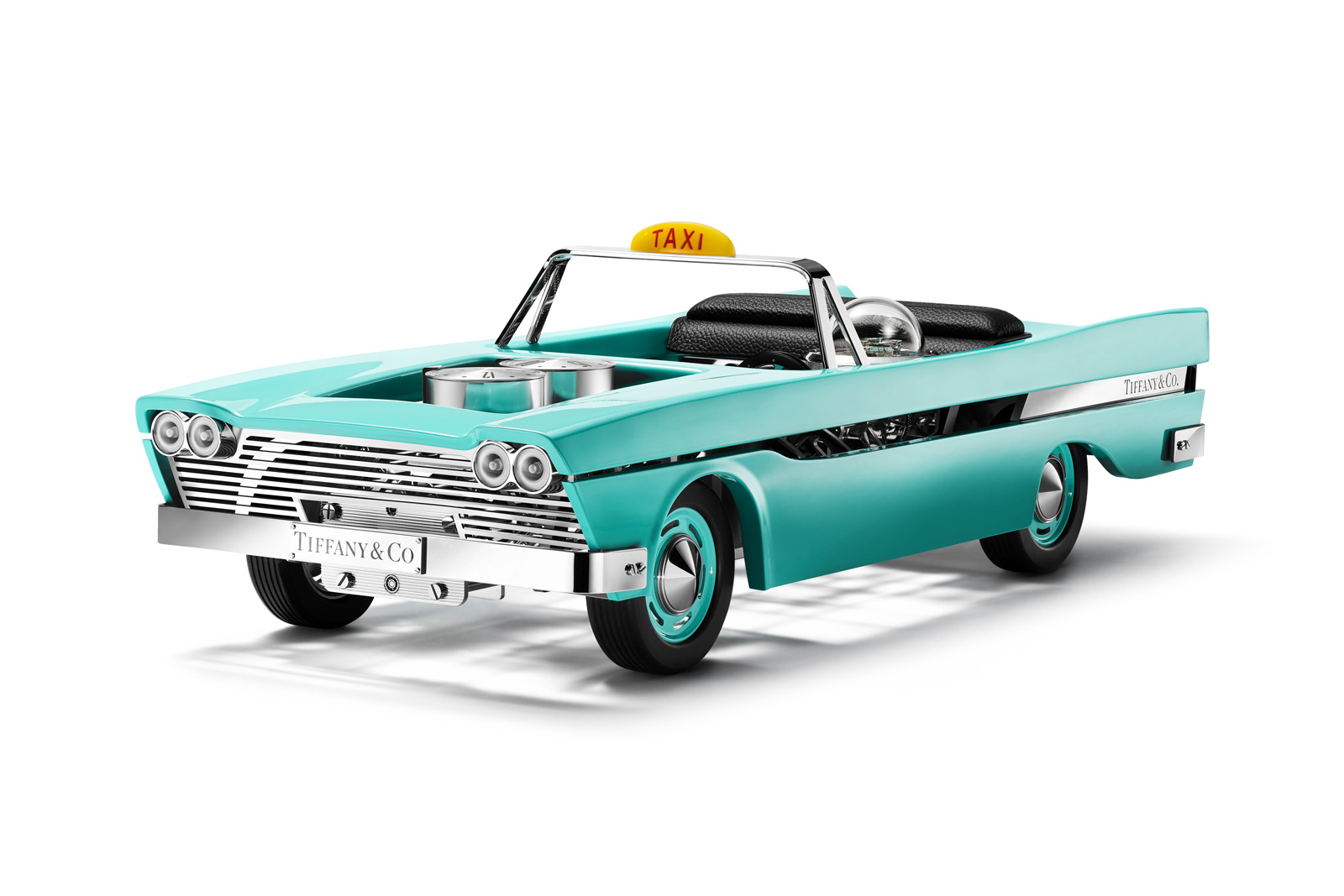Tiffany & Co.’s Table Clock Inspired by 1950s New York Taxicab
A desktop timekeeper evoking midcentury Manhattan.
Now a cultural icon of New York City, Tiffany & Co. has turned to 1950s taxicabs of its home city for its latest tabletop timepiece. The Tiffany Taxi is an eight-day clock in aluminium and steel – in brand’s signature colour naturally. Taking the shape of a typical 1950s American automobile with tail fins, the Tiffany Taxi is both a timekeeper and automaton – it incorporates a time display as well as a V8 engine with moving pistons. And like past Tiffany clocks, it is made by L’Epée 1839, the go-to specialist in Switzerland for high-end clocks.
Initial thoughts
While primarily known for jewellery watches like its signature Bird on a Rock and double-signed Patek Philippe timepieces, the New York jeweller has recently unveiled a line of table clocks. The Tiffany Taxi is its most elaborate to date. In addition to the time display inside the engine compartment, the Taxi clock also has an “engine”, a mechanism taking the form of a V8 engine with pistons that move when the engine is “started”.
Charming as it is, the Tiffany Taxi is a pricey horological novelty, with a retail price of US$50,000. It is, however, an impressive object for the desk that is particularly faithful to Tiffany’s history as a New York City institution.
Inspired by midcentury cabs
The Tiffany Taxi is modelled on the iconic taxicabs of New York City, in particular the Yellow Cabs made famous the world over by films about the city – but the clock is of course in the familiar Robin egg blue. Notably, the clock is also a reference to Tiffany itself, which mounted an advertising campaign in 2018 that painted the city’s taxis in Tiffany Blue.
This is the second motorcar from Tiffany. The first was the Time for Speed, a limited edition based on an existing L’Epee 1839 clock that’s shaped like a 1930s racing car. The Tiffany Taxi, in contrast, is an entirely new model developed for Tiffany & Co.
The Time for Speed clock, here set with diamonds. Image – Phillips
Like an actual automobile, the Tiffany Taxi is constructed from aluminium and steel. Most of its key mechanics are contained within the engine compartment, which is home to two separate gear trains. Both are powered by the same mainspring that is wound by rolling the clock backwards and forwards, with gears in the tyres functioning as the winding gears. On full wind the clock will run for eight days.
One powers the time display that is made up of twin discs shaped like air filters atop dual carburettors. This is regulated by the escapement visible below a glass dome located on the driver’s seat. And setting the time is accomplished by turning the steering wheel counterclockwise.
The other gear train supplies energy to the V8 “engine”, an automaton comprising pistons that move up and down. Starting the “engine” requires turning a key in the dashboard.
The cabin also has a gear lever that is a function selector for the clock. Shifting the gear stick puts the clock in winding, engine, or neutral mode.
The Taxi clock will be available at Tiffany boutiques, with a special version reserved for the flagship New York store known as The Landmark. This edition is fitted with a gold and blue license plate bearing “NY-727” in a nod to the store’s address on 727 Fifth Avenue.
Key facts and price
Tiffany & Co. Tiffany Taxi
Dimensions: 187.96 mm by 472.44 mm by 139.70 mm
Material: Stainless steel and aluminium
Movement: Cal. 1855 MHD
Functions: Hours and minutes
Winding: Manual
Frequency: 18,000 beats per hour (2.5 Hz)
Power reserve: Eight days
Limited edition: In limited quantities of 100 per year, with a special edition only for the New York flagship store
Availability: At Tiffany & Co. boutiques starting December 2023
Price: US$50,000; or 73,000 Singapore dollars
For more, visit Tiffany.com.
Back to top.